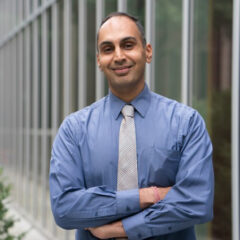(RNS) — More than 50 years after his death, John Coltrane is rightfully recognized as a giant in American music, a visionary who innovated jazz and made an indelible impact on subsequent generations of musicians in a wide variety of genres.
Alice Coltrane’s impact as a jazz musician might not have been as legendary as her husband’s, but she emerged as a multigenre force over her 40-year music career before her death in 2007.
For all the accolades and tributes the pair have received in making their mark in music and popular culture, and becoming outsized in their role as Black history makers, the Coltranes had an arguably equal impact in reimagining American Hinduism.
John Coltrane’s appreciation for Hinduism grew as a result of his exposure to Hindu philosophy, which was made popular in the early to mid-1960s as a result of Indian gurus gaining attention within American counterculture circles. Coltrane also experimented with LSD, and some of his contemporaries noted that his drug use and subsequent recordings were an attempt to connect with a Supreme Being.
In Coltrane’s posthumously released “Om,” he incorporated verses from the Bhagavad Gita while also offering his music as oblations to Brahman, the all-pervading reality in Hinduism symbolized by Om. By doing so, he presented an alternative introduction to Hindu philosophy that had, up until that point, been depicted in mainstream America as caricatured or exotic.
Coltrane’s homage to Hinduism was seen as a form of bhakti, or devotion, but he did not identify as Hindu, noting that he was a follower of all religions. The same could not be said of Alice Coltrane, who embraced Hinduism as a student of the Indian gurus Swami Satchidananda and Sathya Sai Baba. She took the name Turiyasangitananda and became the head of an ashram in California.
In the years that followed, Turiyasangitananda composed Hindu devotional music, drawing followers of different backgrounds. More importantly, she became one of the most prominent female Hindu spiritual leaders in the United States at a time when many of the famous gurus were Indian men.
While Turiyasangitananda’s ashram was destroyed in 2018 during the Woolsey fire, her impact on American Hinduism remains immortalized through her music, notably albums “Turiya Sings,” “Divine Songs” and “Infinite Chants.”
The Coltranes’ son Ravi, himself a famous jazz musician, has continued on their path of connecting spirituality with music.

Murali Balaji. Photo via LinkedIn
Both John and Alice Coltrane started their journeys as learners of Hinduism, but in their own ways, they became two of the religion’s most impactful and unique gurus in its evolution into an American way of life.
(Murali Balaji is a journalist and a lecturer at the Annenberg School for Communication at the University of Pennsylvania. His books include “Digital Hinduism” and “The Professor and the Pupil,” a political biography of W.E.B. Du Bois and Paul Robeson. The views expressed in this commentary do not necessarily reflect those of Religion News Service.)





